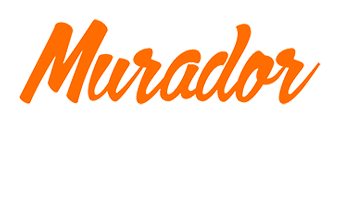h2Comment: Sensible individuals ought to be allowed to visit the countryside, however ‘Covidiots’ are ruining it for everyone/h2
img class=’aligncenter’ style=’display: block;margin-left:auto;margin-right:auto;’ src=https://i.ytimg.com/vi/LaJFrVlVBJ8/hqdefault.jpg width=257px alt=/
pGenetic research explain Armenian variety by several mixtures of Eurasian populations that occurred between 3000 and 2000 BCE. But genetic signals of population combination cease after 1200 BCE when Bronze Age civilizations in the Eastern Mediterranean world suddenly and violently collapsed. Armenians have since remained isolated and genetic construction throughout the inhabitants developed ~500 years ago when Armenia was divided between the Ottomans and the Safavid Empire in Iran. A genetic examine (Wang et al. 2018) supports the indigenous origin for Armenians in a region south of the Caucasus which he calls Greater Caucasus. While the Armenian language is classified as an Indo-European language, its placement within the broader Indo-European language household is a matter of debate./p
pIsraeli Prime Minister Ehud Barak conditionally embraced the proposal. ok‘ałak‘ac‘is (citizens or metropolis dwellers) are the indigenous Armenian-talking inhabitants of the quarter. They stay outside the monastery partitions, and attend the Church of the Holy Archangels (Hreshtakapetats). Writing in 2000, Graham Usher estimated that the Armenian Quarter had a population of 1,200. According to a 2007 examine, the quarter housed 2,424 individuals (6.fifty five% of Old City’s total)./p
pKhash is talked about in twelfth century medieval Armenian texts. The modern Armenian breakfast consists of coffee or tea, plus a spread of cheeses, jams, jellies, vegetables, eggs, and breads./p
h3…And it has the churches to show it/h3
pAntranig Azhderian describes Armenian pilaf as dish resembling porridge. Ardashes H. Keoleian authored the Oriental Cookbook is a group of recipes from the Middle East adapted to American tastes and strategies of preparation is a mixed assortment of recipes that includes some recipes from the Armenian delicacies./p
pAn Armenian civil guard, armed with what Der Matossian describes as makeshift weapons, was fashioned to defend the quarter. The Armenian presence in Jerusalem dates back to the 4th century AD, when Armenia adopted Christianity as a nationwide religion and Armenian monks settled in Jerusalem. Hence, it’s thought of the oldest living diaspora community outside the Armenian homeland. Gradually, the quarter developed around the St. James Monastery—which dominates the quarter—and took its fashionable shape by the 19th century. The monastery houses the Armenian Apostolic Church’s Jerusalem Patriarchate, which was established as a diocese within the 7th century AD./p
pThe world’s largest Yazidi temple is constructed in the small village of Aknalich. According to the Census of 2011, there are 7,587 adherents of Eastern Orthodoxy in Armenia, mainly Russians, Ukrainians, Georgians and Greeks. Russian Orthodox community is centered round Church of the Intercession of the Holy Mother of God in Yerevan, consecrated in 1912. The Catholic Church in Armenia is divided between Latin Rite parishes (subject to Apostolic Administration of the Caucasus) and Armenian Catholic Church’s parishes. Hetanism (Հեթանոսություն, Hetanosutyun) is a neo-ethnic faith movement in Armenia./p
pThere can also be an East Asian ancestry in Turks from admixture occurring around 800 years in the past coinciding with the arrival of the Seljuk Turks to Anatolia from their homelands close to the Aral sea. The introduction of those populations would not appear to have affected Armenians considerably. Around 500 years ago, a genetic structure throughout the population seems to have developed, which coincides with a period when the Armenian folks have been divided between the Ottoman Empire and the successive Iranian empires. Bronze Age demographic processes had a serious impact on the genetics of populations in the Armenian Highlands. Armenians seem to originate from a mix of numerous populations occurring from 3000 BC to 2000 BC./p
h3Traditional Armenian religions/h3
img class=’aligncenter’ style=’display: block;margin-left:auto;margin-right:auto;’ src=https://massispost.com/wp-content/uploads/2013/01/hasmikkhalapyan2.jpg width=258px alt=/
pThe Jews, who numbered a little greater than the Armenians, inhabited the jap part of the Armenian Quarter, which in the second half of the nineteenth century, became the western a part of the Jewish Quarter. In the nineteenth century, most of the Armenian and Christian quarters had European-type gable roofs as opposed to the domes most well-liked in the Muslim and Jewish quarters. In 1833 the Armenians established the city’s first printing press. In 1855 the first photographic workshop in Jerusalem was founded in the Armenian Quarter. Schools for girls and boys have been united in 1869 beneath the name Holy Translators’ School and have become the primary coeducational school in Jerusalem./p
img class=’aligncenter’ style=’display: block;margin-left:auto;margin-right:auto;’ src=http://www.littlearmenia.com/images/singles/singles-04.jpg width=252px alt=/
h2Origin of the Armenians/h2
pLater, in the ninth-10th centuries, a large number of Armenians moved to Italy from Thrace and Macedonia. They were the descendants of Paulicians chased from Armenia by emperor Constantin. An Armenian Byzantine princess, Maria Argyra, turned a href=https://yourmailorderbride.com/armenian-women/https://yourmailorderbride.com/armenian-women//a Dogaressa of Venice in 1003./p
pThousands of Armenians have been killed by Ottoman troops and Kurdish tribesmen when the Armenians began their wrestle for autonomy in 1894. In the summer time of 1894, armed Armenian peasants resisted an assault by the Kurds./p
